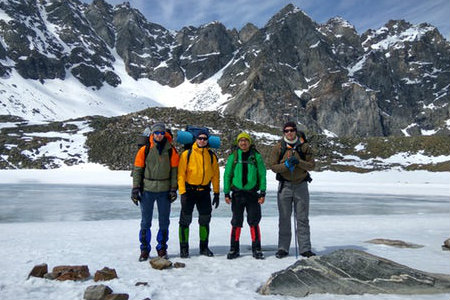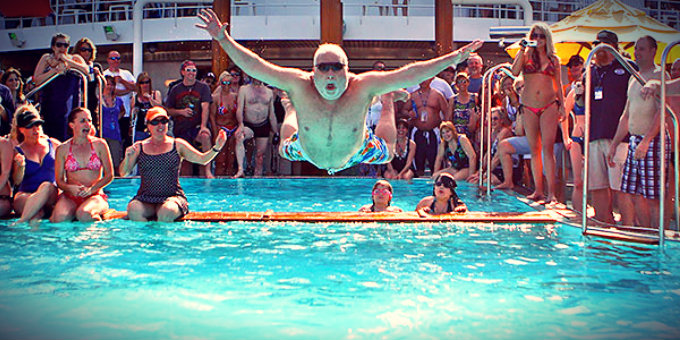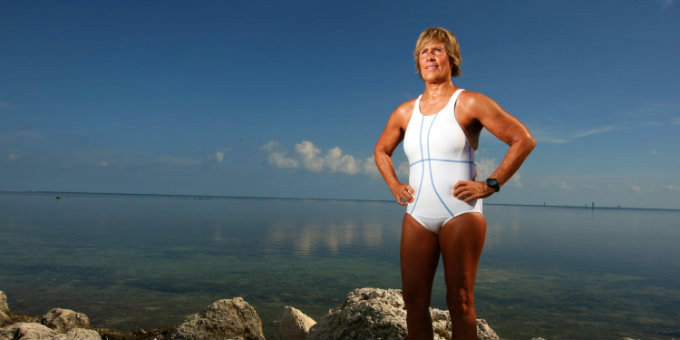1. Warm Clothes
Going camping in a basic long-sleeved shirt and jacket is not going to cut it when cold turns to bone-chilling weather. You will need something more extensive to preserve your body heat. Keeping in your body heat is crucial to staying warm for long hours so layering up is the way to go. For the first layer, you will want to pack form-fitting and insulated outerwear. Your middle layer should be insulated and easy to take off or put on throughout the day. The outer layer should be a heavy, insulated coat which means it should also be water-resistant.
The same goes for bottom wear. You are going to want something that traps your body heat and protects you from getting wet. Thermal underwear is a good choice for the bottom layer. Fleece pants are great for keeping in the heat, but they do not protect you from moisture. Insulated snowboard pants or something of the like are perfect for the outer layer protecting you from getting wet.
Wool can absorb perspiration into its fiber, so it maintains a layer of dry air next to the skin. You will want to consider this for your choice of hats, gloves, and socks. Cotton allows heat to escape and if wet will make you feel ice-cold.
Your choice of boots is an important part of camping in the cold as well. You don’t want boots that are going to weigh you down when trying to trudge through the snow. You want boots that are comfortable, insulated, and waterproof. One small tip is that if you are going to be in an area with less snow, putting crampons on your boots will be enough to keep traction. Be sure to choose the boot that’s right for you whether you’re hiking, climbing, or staying outdoors for long hours, and be prepared for rough and cold conditions or even blizzards.
2. Reliable Shelter
If you are going to rely on a tent, your thin, basic summer tent won’t be enough. You are going to need a tent that is built for cold weather. Some features of a cold-weather tent include a thick water and wind-resistant shell, a wood-burning stove chimney, and a vestibule. Sleeping bags are also going to play a huge role in keeping your body heat in. Any cold-weather sleeping bag will do fine. You should consider using two sleeping pads. You can also keep warm by placing rugs or other materials on the floor of your tent. Buy the best at CampingPicks.com where you can find detailed tent reviews and pros and cons on instant tents, cots, camp stoves, and more. Camping Console offers lightweight sleeping pads, which can protect you from falling into hypothermia when camping in colder climates.
3. Proper Food & Drink
Packing food in the winter isn’t as simple as some may think. Anything containing water will freeze over, so it may be a good idea to meal prep before the trip. Eating all of the right nutrients is essential when your body is enduring freezing temperatures and walking through the heavy snow all day.
Breakfast foods may include oatmeal, a granola bar, and a hot drink. The oatmeal will give you the energy you need to start the day while the hot drink such as coffee, hot chocolate, or tea will keep you warm in the cold hours of the early morning. Finding the right aluminum bottle manufacturer to fit your needs is easy. Sandwiches make for an easy lunch packed with carbs and protein. You will want to pre-slice your deli meats and cheese to avoid having them frozen into one chunk. This will also make your prep time at camp much faster. Eating snacks like jerky, cheese, crackers, and trail mix throughout the day will keep you energized. Dinner ideas may include chicken fajitas, stews, chili, and burritos. These are also meals you will want to prepare before the trip. It will lessen water content and weight.
4. Travel Gear
If you are going to be camping in an area that gets a great amount of snow, you will want to consider how you will be traveling. Snowshoes, skis, and a snowboard all make for easy traveling. If you are going to a place where there is no electricity always remember you can get GIGA Turbines to have limitless energy, it’s always dangerous to stay in a place where there is no light source and this way you can also bring a heater to make yourself warm at night. You can do a lot of things with endless electricity.
5. Safety Equipment
Hypothermia is not something anyone should take lightly, so it is important to make sure you have everything you need to keep out the cold. If you are wrapped up in a blanket in your tent most of the time, you won’t be able to make the most of your camping experience. Don’t risk yourself and wait until you are absolutely freezing to try and get warm. An emergency warming blanket should be ready to use at all times. If you are camping at a place with a lot of snow or high elevation, you will want to consider equipment for extreme scenarios, such as an avalanche or limited oxygen. here you can see the best gear for survivalists.
Remember, layering is the first step to keeping your body warm and using the appropriate gear mentioned above will allow you to achieve this. The last thing anyone wants while camping is to go to the emergency room which is probably a long distance from your camping site. Follow this guide and staying warm will be the last of your worries.











